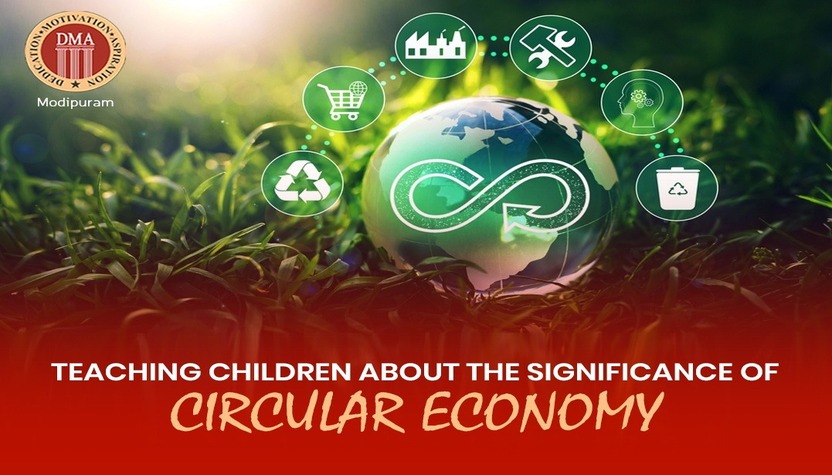As the world continues to evolve, making children well aware of the world around them has become increasingly crucial. The global economy has relied on a linear approach for too long, causing significant damage to the environment. For the uninitiated, the linear approach is built on the ‘take, make, and dispose’ model. It has caused many finite natural resources to deplete, given rise to climate change challenges, and caused considerable damage to the environmental landscape.
The world is now focusing on establishing a circular economy to prevent such practices from further depreciating the planet. This new economic model aims to achieve a systematic transformation wherein the value of products, resources, and materials will be long-lived. It implies that products will be used for as long as possible to minimize carbon footprint. Since the planet’s future belongs to the children, it is vital that children be informed and made aware of the significance of circular economy for environmental management.
So today, through this blog, we at Dayawati Modi Academy, a well-known top CBSE schools in Meerut, would like to educate our students and everyone reading this blog about what circular economy is and how it presents a viable solution for the environment.
Circular Economy: Things Everyone Must Know!
The concept of circular economy basically revolves around developing our society sustainably so that the available resources are preserved for future generations. In a circular economy, wastes are minimized, and resources are used more efficiently and responsibly. Contrary to the present-day linear approach of take, make, and dispose, the circular economy focuses on reusing, repairing, and recycling all critical resources to reduce waste. Switching from the present-day linear approach to a circular economy is essential for the management of the environment.
Since the world demands more responsible citizens, it is essential that the concepts of circular economy are taught to children from a young age. This is exactly what we at Dayawati Modi Academy have been doing. We firmly believe an interdisciplinary teaching approach is required to make children aware of this emerging economy. While the concept can be explained in various ways, we recommend leveraging the following methods to teach children about the significance of the circular economy.
-
Start with the Fundamentals
The circular economy is a simple concept with certain complex elements. Since it is still relatively new to children, structuring the education process is vital. At our school, we teach children about such concepts simply, clearly, and concisely. We suggest the parents to take a similar approach at home and use real-world examples of everyday items to explain how they can be reused or repurposed along with associated benefits.
-
Actively Engage Them in Recycling Process
Kids learn more by doing than merely reading about a topic. Since recycling is at the core of the circular economy, engaging children in recycling activities is the best way to ignite their interest. You can teach children efficient ways of sorting and recycling different waste types, like paper, glass, plastic, etc. At Dayawati Modi Academy, we schedule fun activities that make students engage in recycling activities and other tasks that teach them about the circular economy and its real-world implications.
-
Teach Them to Repair & Upcycle
A fun way to actively teach children about the circular economy is by encouraging them to repair things instead of throwing them away and getting new ones. Involving them in upcycling projects can raise their awareness and help clarify core concepts. There are various ways to upcycle things, like using DIY techniques to turn old clothes into new ones. The same can be applied to furniture, home décor items, accessories, etc.
Children can be given fun challenges to convert old items into something new, relevant, and good-looking, and they can be given small rewards for such projects as well. Even verbal appreciation would encourage them to do more repair and upcycle work.
-
Use Different Educational Resources
Thanks to the internet, children can now access massive amounts of information on any topic at their fingertips. Since the circular economy is a deep concept, only textbook learning won’t suffice. Children should explore more online resources that explain the circular economy in a fun and interactive way. Animated videos, online quizzes, documentaries, and ebooks on the circular economy can be the best educational resources for children.
Conclusion
Making children aware of the circular economy is an important stepping stone to building a sustainable future. When children learn more about this concept, they eventually develop a deep sense of responsibility towards the environment. They start making more conscious choices that are great for the environment. At Dayawati Modi Academy, one of the top CBSE schools in Meerut, we are actively taking steps to make children more aware of the circular economy and would like to urge the parents to join in the cause too!

